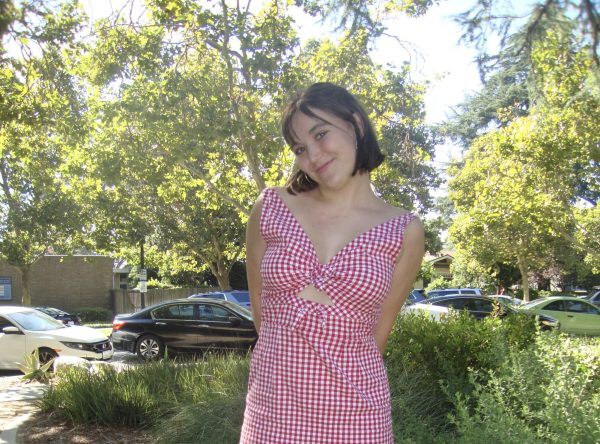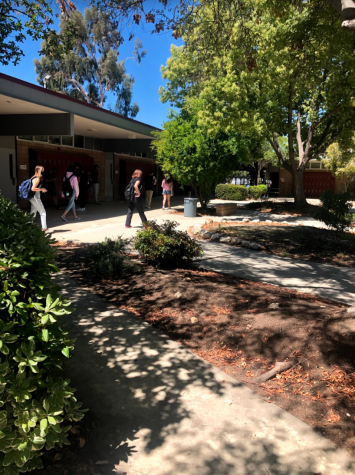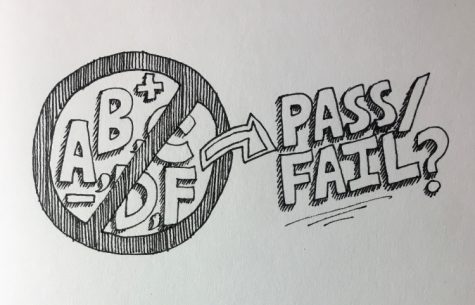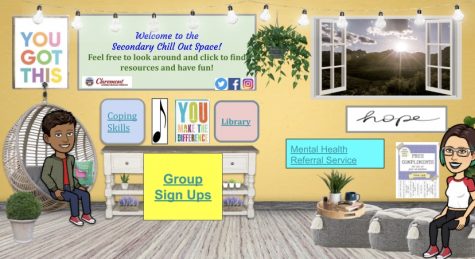Teacher’s perspective on the start of hybrid school
While most of the focus and sympathy this year has been directed at the students for having to endure online school, there is no denying that teachers have had at least an equally trying year. Quarantine has brought challenge after challenge, change after change, and adjustment after adjustment, from the decision to enroll students in online school in mid-March last year, to the start of fully online school in early September, and now to the optional return of in-person school. Teachers, too, have had to learn to communicate and function without being physically together with students.
Throughout this school year, teachers have had to adapt to many changes. They have converted their methods of assigning work and tests to involve apps like Canvas. They have learned how to navigate Zoom and how to teach and interact with students online, and the already difficult task of teaching is made increasingly more difficult when staring at nothing but a bunch of names on a screen. Teachers generally feed off of their students’ reactions. Without being able to see their faces up close, it is hard for them to be certain who is following along and who needs more assistance. CHS teachers Ms. Crilly (math) and Ms. Rivette (biology) shared their thoughts on adapting to online school.
“It’s interesting because at first it didn’t feel right; I felt like I didn’t have the resources I needed, being a biology teacher and not being able to do actual hands-on labs,” Rivette said. “I do feel like throughout the process for me … I was able to gain more perspective … and I had more time to really have conversations, it’s like a different way of getting to know your kids, so that was cool.”
Ms. Crilly shared a similar sentiment. She explained the ways teachers are trying to get as much teacher-student interaction as possible.
“I think the biggest adjustments have been doing the notes via video … and trying to find materials that I didn’t think were completely necessary so we could leave out some of the normal standards and focus on the really necessary standards,” Crilly said. “And trying to add in some … questions at the beginning to try to get students to interact a little bit more since we are not actually in class … together. … I’m trying to find other assignments that are a little more interactive than just problems out of the book, so that since students are at home, they can hopefully enjoy it a little bit more.”
However, with hybrid schooling starting this week, there is hope that some sense of normalcy will return. Many students and teachers have expressed joy at the idea of returning.
“I’m really excited,” said Rivette. “Even though yes [online school is] comfortable and I don’t have to get dressed up or get my kids out the door in the morning, I saw firsthand … with my own children, who are high school students, the toll it takes on them with friendships and sports and interaction, even just teacher time. It’s just not good for them, so I’ve kind of been an early adopter … of let’s just go! … It’s exciting to me, I have a lot of freshmen; it’s so exciting that they’re going to finally be real freshmen and kind of get to know it almost at a lower stress level … they’re going to get their toe in the water.”
There are both pros and cons that come with the idea of going back. While some seem to share Rivette’s excitement, not all teachers agree.
“I definitely am looking forward to actually seeing people in person, I’m very social so sitting alone and just staring at a computer screen does not work well for me,” Crilly said. “But at the same time, I think consistency in life is important. And especially since everything has been so different, I think in the long run, it would have been better to stay consistent and stay online through the rest of the school year … and then … start fresh at the beginning of next school year.”
Balancing having some students in class and others on Zoom at the same time will be no easy task. Some teachers are having to adjust their curriculum to fit the needs of all students, while others think the content of their classes will remain largely the same.
“Nothing is changing for me as far as … the way we turn things in,” Rivette said. “What will change as a bio teacher is I really want them to get their hands on real labs. … First thing I plan to do is our lab safety. … I feel like everybody’s going to get the same experience in that way.”
However, a lot more students have chosen, for various reasons, to stay fully online than was originally expected. Because of this, different teachers will have different physical audiences and just an overall different experience than they normally would.
“Unfortunately, because of how many of my students are going to be online … a lot of the way I’m going to teach is going to be very similar to when we were 100% online,” Crilly said. “Some of my classes only have like five students sitting in the classroom and the rest are online, so I think it’s going to be very similar. … For the first week it will definitely be the same. Once we get more comfortable and I see how things are going to go … if I can try to make it a little more interactive in class I will. The problem with that is we still have to keep the six-foot distance and the masks. … I like to do a lot of group work and working together, so … I can’t group students up … or things that I would normally do.”
Teachers of all people know how difficult this year has been for themselves and everyone else. They have even been able to witness the difference online school has made in the amount of effort and energy their students put into their work.
“I think I saw a strong dip (of student performance) in the beginning, I think kids were discouraged, I think kids didn’t really feel there was a lot of value,” Rivette said. “But I think there was a point where we kinda hit that caring capacity … I really saw kids kick into gear … the more authentic the process became on both sides, the more I saw kids perform. … I’ve seen a lot of growth in … personal responsibility … I think people are realizing ‘when I get things done, I’m done!’”
Although this time has presented many challenges, it has also come with lots of growth. Ms. Rivette expressed that the students are not the only ones who have undergone development and change.
“It’s been something that has made me a better teacher,” Rivette said. “It’s okay to push some curriculum to the side and say; ‘we can’t do this today, we need to just sit back and think about our mental health’ or … sit back and just have some quiet time. Teachers sometimes think they are not doing their job if they’re making other kinds of adjustments, but I think we’re doing more of a good job if we are. … It really has reinforced the type of teacher I have always wanted to be”
For teachers and students alike, the pandemic has been a learning experience. And throughout it all, teachers and administrators have set a good example for students by having a growth mindset.
“I’m very proud of our students, I’m very proud of our teachers, this has been a really tough year and most people have been really flexible … we are figuring it out together and we are moving forward together, and it’s not perfect, and that’s life,” Crilly said. “We are just going to figure things out as we go and we will make it through it.”
Hello there! Our goal is to provide relavent, engaging journalism for readers of all ages. Your donation will support the student journalists of the Wolfpacket at Claremont High School, and will allow us to purchase equipment, print our monthly issues, and enter in journalism competitions. We appreciate your consideration!

Izzy Thomas is a senior at CHS and one of the three Editors-in-Chief for The Wolfpacket. Her hobbies include taking photos, cooking, playing guitar, and...







